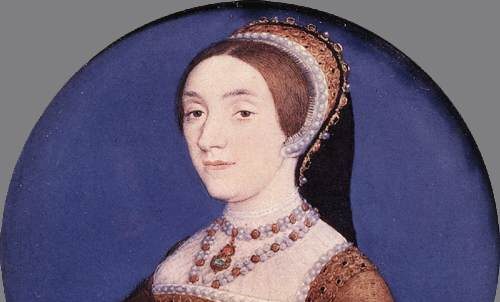
On 13 February in 1542, Catherine Howard met her tragic end. The youngest of Henry VIII’s consorts, Howard and her short tenure, is often forgotten for Catherine of Aragon and Anne Boleyn. However, her execution was nothing like that of her cousin Boleyn.
The daughter of Lord Edmund Howard and Joyce Culpeper, Howard was born sometime around 1523. After her mother died and her father remarried, she was raised in her step-grandmother’s household. The Dowager Duchess of Norfolk had a large household and many young women were sent to her to be educated.
While she was living there, Howard caught the eye of her music tutor, Henry Mannox, and many historians believe that their relationship was inappropriate on many levels. She cut this relationship off but was then pursued by the Dowager Duchess’s secretary, Francis Dereham. They called each other “husband and wife”, and were reportedly lovers. Their relationship ended when Dereham had to go to Ireland, though they probably intended to reunite upon his return.
Howard caught the King’s eye while serving as a Lady-in-Waiting to his fourth wife, Anne of Cleves, in 1540. His fourth marriage ended quickly in annulment after claiming that Anne looked nothing like her portrait and because Howard had piqued his attention. By this point in time, Henry was largely overweight and in considerable pain from older injuries; the young, beautiful woman provided excitement and youth for the King.
They married on 28 July 1540 at Oatlands Palace, and Howard took to life as queen. She adored receiving new clothes and jewels almost daily and enjoyed court entertainments. However, her young age and past worked against her. She had little experience of court machinations, and several people from her past life in Norfolk asked for places in her household, including Dereham.
Howard may have been involved with one of the King’s courtiers, Thomas Culpeper. Jane Boleyn, one of her Ladies-In-Waiting purportedly arranged their secret meetings. Word quickly spread at court, and the many people who wanted to remove the Howard faction at court seized their opportunity.
On 1 November 1541, the King received an anonymous letter detailing Howard’s conduct, and a week later, Archbishop Thomas Cramner questioned her. She was immediately inconsolable, and Cramner had everything removed that she could have used to harm herself. On the 23rd of that month, she was stripped of her title. Both Culpeper and Dereham were executed on 10 December for high treason, for their supposed relationships with her.
Howard stayed in a state of limbo, until 7 February 1542 when Parliament passed an act of attainder against her. By 10 February, she had been taken to the Tower of London through Traitor’s Gate to await her execution. Although she was screaming and crying while being taken to the Tower, she understood the gravity of her situation. While her cousin Boleyn had hoped to the last moment to receive a reprieve, Howard knew that nothing would come. She requested an execution block to practice laying her head down.
On the morning of 13 February, she went to the executioner’s block. Witnesses commented on her composure and calmness. There is a legend that says her last words were “I die a Queen but I would rather have died the wife of a Culpeper” but there are no contemporary accounts to confirm this.
Howard was buried in an unmarked grave in the chapel of St. Peter Ad Vincula, where cousins were also buried. Many bodies were identified from the chapel during Queen Victoria’s reign, but unfortunately, Howard wasn’t one of them. She is now commemorated on the chapel’s west wall and on the memorial to those executed at the Tower outside of the chapel.

